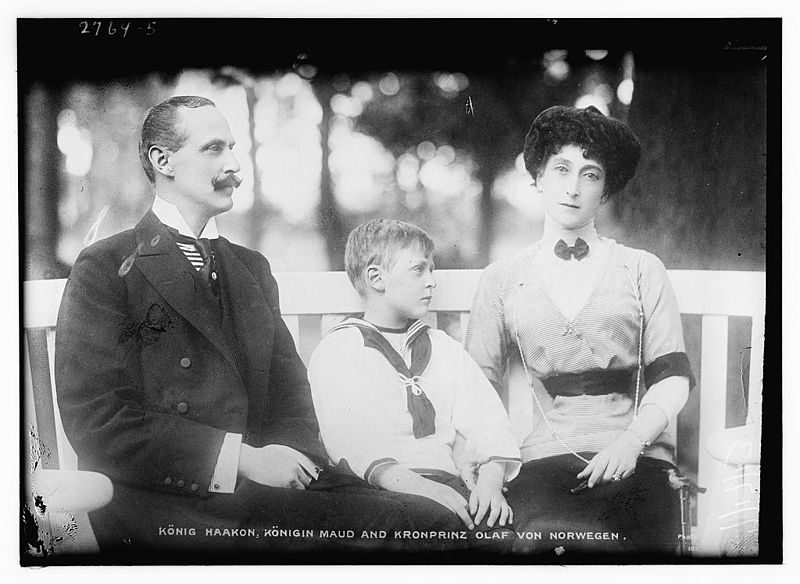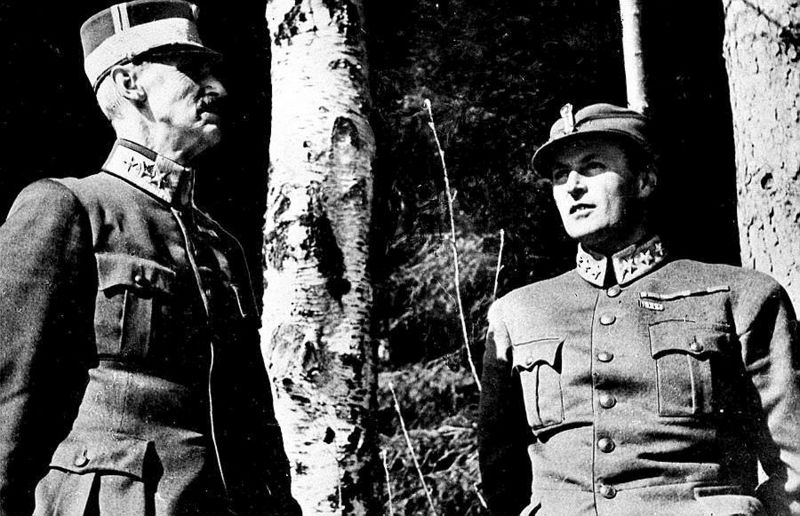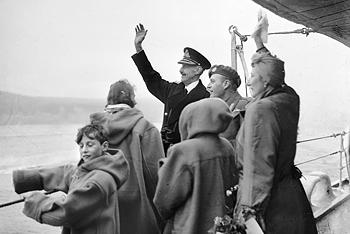<Back to Index>
- Inventor William Kennedy Laurie Dickson, 1860
- Composer Ivan Zajc, 1832
- King of Norway Haakon VII, 1872
PAGE SPONSOR
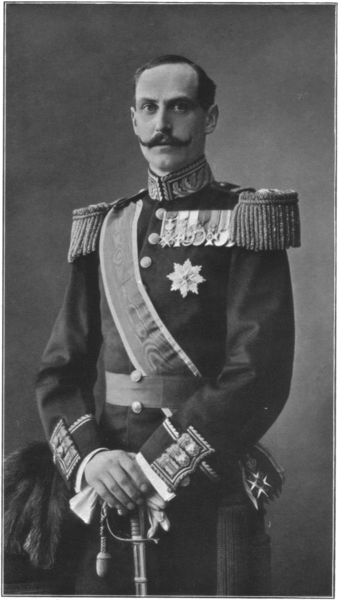
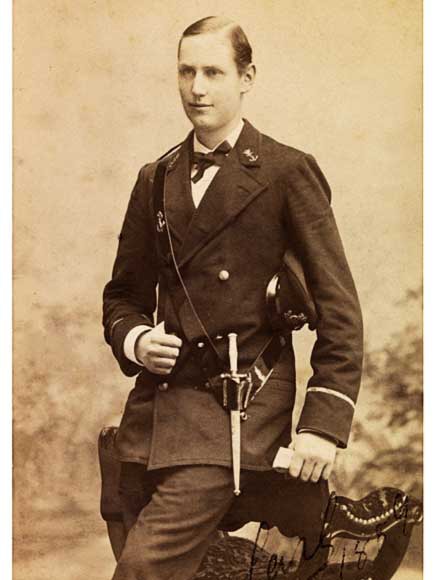
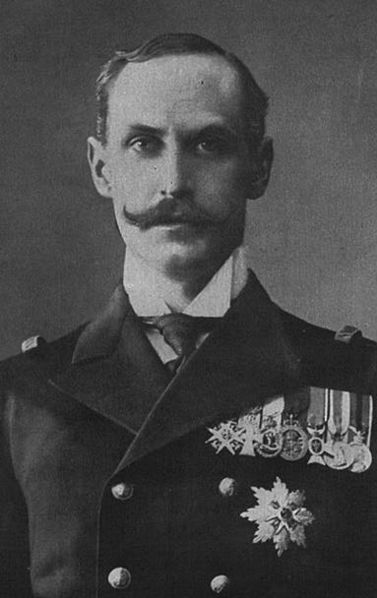
Haakon VII (Prince Carl of Denmark and Iceland, born Christian Frederik Carl Georg Valdemar Axel) (3 August 1872 – 21 September 1957), known as Prince Carl of Denmark until 1905, was the first king of Norway after the 1905 dissolution of the personal union with Sweden. He was a member of the House of Schleswig - Holstein - Sonderburg - Glücksburg. As one of the few elected monarchs, Haakon quickly won the respect and affection of his people and played a pivotal role in uniting the Norwegian nation in its resistance to the attack and five year long Nazi occupation during World War II.
In
Norway, Haakon is regarded as one of the greatest Norwegians of the
twentieth century and is particularly revered for his courage during the German invasion - when threatening abdication if
the government cooperated with the invading Germans - and his
leadership and preservation of Norwegian unity during the Nazi
occupation. He died at the age of 85 in 1957, after having reigned for
nearly 52 years. Originally
known as Prince Carl of Denmark (namesake of his maternal grandfather
the King of Norway etc.), he was the second son of (the future) King Frederick VIII of Denmark and his wife Louise, a younger brother of Christian X, a paternal grandson of King Christian IX of Denmark (during whose reign he was prince of Denmark), and a maternal grandson of King Charles XV of Sweden (who
was also king of Norway as Charles IV). He became king of Norway before
his father and older brother became kings of Denmark. During his reign,
he saw his father, his brother and his nephew, Frederick IX, ascend the throne of Denmark, respectively in 1906, 1912 and 1947. Prince Carl was born at Charlottenlund Palace near Copenhagen. He belonged to the Schleswig - Holstein - Sonderburg - Glücksburg branch of the House of Oldenburg. The House of Oldenburg had been the Danish royal family since 1448; between 1536 – 1814 it also ruled Norway when it was part of the Kingdom of Denmark - Norway.
The house was originally from northern Germany, where the Glucksburg
(Lyksborg) branch held their small fief. The family had permanent links
with Norway beginning from the late Middle Ages. Several of his
paternal ancestors had been kings of independent Norway (Haakon V of Norway, Christian I of Norway, Frederick I, Christian III, Frederick II, Christian IV, as well as Frederick III of Norway who integrated Norway into the Oldenburg state with Denmark, Slesvig and Holstein, after which it was not independent until 1814). Christian Frederick,
who was King of Norway briefly in 1814, the first king of the Norwegian
1814 constitution and struggle for independence, was his
great-grand-uncle. Prince Carl was raised in the royal household in Copenhagen and educated at the Royal Danish Naval Academy,
from which he graduated near the bottom of his class. He was a key
witness in the scandal following the suicide of Kai Simonsen. At Buckingham Palace on 22 July 1896, Prince Carl married his first cousin Princess Maud of Wales, youngest daughter of the future King Edward VII of the United Kingdom and his wife, Princess Alexandra of Denmark, daughter of King Christian IX of Denmark and Princess Louise of Hesse - Kassel (or Hesse - Cassel). Their son, Prince Alexander, the future Crown Prince Olav (and eventually king Olav V of Norway), was born on 2 July 1903. After the Union between Sweden and Norway was dissolved
in
1905, a committee of the Norwegian government identified several
members of European royalty as candidates for Norway's first King of
its own in several centuries. Gradually, Prince Carl became the leading
candidate, largely because of the fact that he was descended from
independent Norwegian kings. He also had a son (and hence an heir to
the throne), and Princess Maud's ties to the British Royal Family were
viewedas advantageous to the newly independent Norwegian nation. The democratically minded Carl, aware that Norway was still debating whether to retain its monarchy or to switch to a republican system of government, was flattered by the Norwegian government's overtures,
but declined to accept the offer without a referendum to show whether
monarchy was truly the choice of the Norwegian people. After the referendum overwhelmingly confirmed by 79 percent majority (259,563 votes for and 69,264 against) that Norwegians desired to retain a monarchy, Prince Carl was formally offered the throne of Norway by the Storting (parliament)
and elected on 18 November 1905. When Carl accepted the offer that same
evening (after the approval of his grandfather Christian IX of Denmark), he immediately endeared himself to his adopted country by taking the Old Norse name of Haakon, a name used by previous Kings of Norway. In so doing, he succeeded his grand-uncle, Oscar II of Sweden,
who had abdicated the Norwegian throne in October following the
agreement between Sweden and Norway on the terms of the separation of
the union. The new Royal Family of Norway left Denmark on the Danish Royal yacht "Dannebrog" and went sailing up Oslofjord. At Oscarsborg Fortress they boarded the Norwegian naval ship "Heimdal". After the three-day journey they arrived in Kristiania (Oslo)
early on the morning of 25 November 1905. Two days later, Haakon was
taken in oath as the Norwegian King. The coronation of Haakon and Maud
took place in Nidaros Cathedral in Trondheim on 22 June 1906. King
Haakon gained much sympathy from the Norwegian people. He traveled
around and visited many places. He participated in the political
process after the first prime minister from the labour party was chosen
in 1928, a process that caused a special parliamentary situation.
Norway was invaded by the naval and air forces of Nazi Germany during the early hours of 9 April 1940. The German naval detachment sent to capture Oslo was challenged at Oscarsborg Fortress. The fortress fired at the invaders, causing damage to the pocket battleship Lützow and sinking the heavy cruiser Blücher,
with heavy German losses that included many of the armed forces,
Gestapo agents, and administrative personnel who were to have occupied
the Norwegian capital. These events led to the withdrawal of the rest
of the German flotilla, preventing the invaders from occupying Oslo at
dawn as had been intended in the order of battle. The German occupation
forces' delay in occupying Oslo, along with swift action from the President of the Storting,
C.J Hambro, created the opportunity for the Norwegian Royal Family,
the Cabinet, and most of the 150 members of the Storting (parliament)
to make a hasty departure from the capital by special train. The Storting first convened at Hamar the same afternoon, but with the rapid advance of German troops, the group moved on to Elverum. The assembled Parliament unanimously enacted a resolution, the so-called Elverumsfullmakten (Elverum Authorization), granting the Cabinet full powers to protect the country until such time as the Storting could meet again. The next day, German Minister Curt Bräuer demanded a meeting with Haakon. The German diplomat called on the Norwegians to cease their resistance and stated Hitler's demand that the King appoint Nazi sympathizer Vidkun Quisling, who had declared himself prime minister hours earlier in Oslo, as head of what would be a German puppet government. Bräuer suggested that Haakon follow the example of the Danish government and his brother, Christian X,
which had surrendered almost immediately after the previous day's
invasion, and threatened Norway with harsh conditions if it did not
surrender. Haakon told Bräuer that he could not make such a
decision himself, but only on the advice of the Government. Although the Constitution of Norway nominally
gives the King the final responsibility for making such a decision, in
practice nearly all major governmental decisions are made by the
Government (the Council of State) in his name. In an emotional meeting in Nybergsund,
the King reported the German ultimatum to his cabinet. Although Haakon
could not make the decision himself, he knew he could use his moral
authority to influence it. Accordingly, Haakon told the Cabinet: For
my part I cannot accept the German demands. It would conflict with all
that I have considered to be my duty as King of Norway since I came to
this country nearly thirty-five years ago. Haakon
went on to say that he could not appoint any government headed by
Quisling because he knew neither the people nor the Storting had
confidence in him. However, if the Cabinet felt otherwise, the King
said he would abdicate so as not to stand in the way of the Government's decision. Nils
Hjelmtveit, Minister of Church and Education, later wrote: "This made a
great impression on us all. More clearly than ever before we could see
the man behind the words; the king who had drawn a line for himself and
his task, a line from which he could not deviate. We had through the
five years [in government] learned to respect and appreciate our king
and now, through his words, he came to us as a great man, just and
forceful; a leader in these fatal times to our country". Inspired
by Haakon's stand, the Government unanimously advised Haakon not to
appoint any government headed by Quisling. Within hours, it telephoned
its refusal to Bräuer. That night, NRK broadcast
the government's refusal to the Norwegian people. In that same
broadcast, the government announced that they would resist the German
attack as long as possible, and expressed their confidence that Norwegians would lend their support to the cause. The following morning, 11 April 1940, bomber aircraft of the Luftwaffe attacked
Nybergsund, destroying the small town where the Norwegian government
was staying in an attempt to wipe out Norway's unyielding King and
Government. The King and his ministers took refuge in the snow covered
woods and escaped harm, continuing farther north through the rugged
Norwegian mountains toward Molde on
Norway's northwestern coast. As the British forces in the area lost
ground under Luftwaffe bombardment, the King and his party were taken
aboard the British cruiser HMS Glasgow at Molde and conveyed by sea another 1000 km north to Tromsø where a provisional capital was established on 1 May. Haakon and Crown Prince Olav took up residence in a forest cabin in Målselvdalen valley in inner Troms county where they would stay until the evacuation to the United Kingdom. While residing in Troms the two were protected by local rifle association members armed with the ubiquitous Krag - Jørgensen rifle. The Allies had a fairly secure hold over northern Norway until late May, but as the Allies' position in the Battle of France rapidly
deteriorated, the Allied forces in northern Norway were badly needed
elsewhere and were withdrawn. The Royal Family and the beleaguered and
demoralized Norwegian Government was evacuated from Tromsø on 7
June aboard HMS Devonshire; and after a 34 knot (63 km/h) dash, under cover of HMS Glorious, HMS Acasta, and HMS Ardent, safely arrived in London. Haakon and his cabinet set up a Norwegian government in exile in the British capital. Taking up residence at Rotherhithe in London,
Haakon was an important national symbol in the Norwegian resistance.
Between March 1942 and the end of the war in June 1945 the King and his
son, Crown Prince Olav, lived at Foliejon Park in Winkfield, near Windsor. Meanwhile, Hitler had appointed Josef Terboven as Reichskommissar for
Norway. On Hitler's orders, Terboven attempted to coerce the Storting
to depose the King; Parliament declined, citing constitutional
principles. A subsequent ultimatum was made by the Germans under threat
of interning all Norwegians of military age in German concentration
camps. With
this threat looming, the Norwegian Parliament's representatives in Oslo
wrote to their monarch on 27 June, asking him to abdicate. The King,
politely replying that the Storting had acted under duress, declined
the request. After one further German attempt in September to force the
Storting to depose Haakon failed, Terboven finally decreed that the
Royal Family had "forfeited their right to return" and dissolved the
democratic political parties. During
Norway's five years under German control, many Norwegians
surreptitiously wore clothing or jewelry made from coins bearing
Haakon's "H7" monogram as symbols of resistance to the German occupation and of solidarity with their exiled king and government, just as many people in Denmark wore his brother's
monogram on a pin. The King's monogram was also painted and otherwise
reproduced on various surfaces as a show of resistance to the
occupation. After the end of the war, Haakon and the Norwegian Royal Family returned to Norway aboard the cruiser HMS Norfolk, arriving with the First Cruiser Squadron to cheering crowds in Oslo on 7 June 1945 exactly five years after they had been evacuated from Tromsø. In 1947 the Norwegian people, by public subscription, purchased the Royal Yacht, Norge, for the King. In 2009 it remains as one of only two such vessels belonging to a European monarch, the other yacht belonging to the Queen of Denmark. King Haakon VII fell in his bathroom at the estate at Bygdøy in
July 1955. This fall, which occurred just a month before his
eighty-third birthday, broke the King's thighbone and, although there
were few other complications resulting from the fall, the King was left
confined to a wheelchair. The once active king was said to have been
depressed by his resulting helplessness and began to lose his customary
involvement and interest in current events. With Haakon's loss of
mobility, and as the King's health deteriorated further in the summer
of 1957, Crown Prince Olav appeared on behalf of his father on
ceremonial occasions and took a more active role in state affairs. At
Haakon's death in 1957, the Crown Prince succeeded as Olav V. Today,
King Haakon is regarded by many as one of the greatest Norwegian
leaders of the pre-war period, managing to hold his young and fragile
country together in unstable political conditions. In 1927 he said, "I
am also the King of the Communists" (Norwegian: "Jeg er også kommunistenes konge"). His loyalty to democracy proved to be crucial for the political situation of Norway during and after World War II.
“ I
am deeply affected by the responsibility laid on me if the German
demand is rejected. The responsibility for the calamities that will
befall people and country is indeed so grave that I dread to take it.
It rests with the government to decide, but my position is clear. ”
